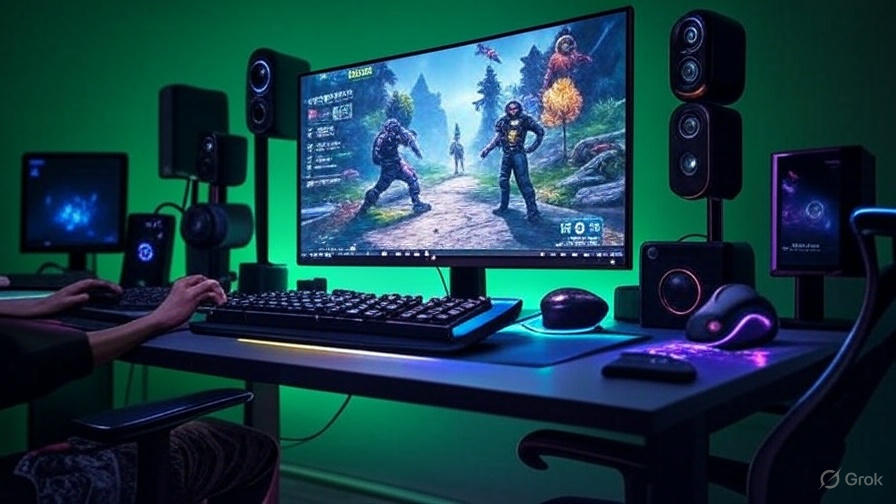Introduction
In recent years, Linux has rapidly emerged as a serious contender in the gaming world, thanks to innovations like Proton, Vulkan, and community-driven support. Still, achieving peak performance requires more than just installing a few drivers—it demands a deeper understanding of how to optimize systems. This is where tech hacks pblinuxgaming enters the conversation. For Linux enthusiasts, this phrase has become synonymous with customizing, tweaking, and enhancing the open-source environment to rival or even surpass traditional gaming platforms.
The term “tech hacks pblinuxgaming” doesn’t refer to shortcuts or cheats; rather, it highlights practical solutions gamers can apply to boost frame rates, reduce latency, and stabilize gameplay. From kernel-level adjustments to software overlays and hardware optimizations, these hacks empower players to maximize their rigs. Linux’s flexibility allows for granular control, enabling gamers to tailor every aspect of their systems. The result? A smoother, faster, and more immersive experience.
What makes pblinuxgaming unique is its strong sense of community. Forums, GitHub repositories, and open-source projects thrive on collaboration, where users share discoveries, fixes, and scripts to improve the experience for everyone. This collective effort continually expands the toolkit available for Linux gamers, ensuring compatibility with more titles and more efficient use of resources. The beauty of these hacks lies in their adaptability: while one user may benefit from Vulkan tweaks, another may gain an edge through kernel modifications or hardware tuning.
This article explores the world of tech hacks pblinuxgaming, providing a roadmap to unlock the full potential of Linux-based gaming. From graphics enhancements and kernel tweaks to streaming and system stability, these strategies give both beginners and advanced users the tools to elevate their setups. Whether you’re new to Linux gaming or already a seasoned tinkerer, the following sections will help you harness the power of open-source innovation for your next gaming session.
Optimizing Graphics Performance in Tech Hacks PBLinuxGaming
One of the most effective ways to elevate your setup with tech hacks pblinuxgaming is through graphics performance optimization. Gamers often struggle with frame drops, stuttering, or lag when playing resource-intensive titles. By prioritizing Vulkan over OpenGL, users can tap into a more efficient graphics API designed for modern hardware. Vulkan’s low-level architecture reduces CPU overhead, allowing smoother frame pacing and higher frame rates. For competitive gaming, even small gains in responsiveness can make a noticeable difference.
Driver management is another cornerstone of graphics optimization. NVIDIA users often benefit from proprietary drivers, while AMD players frequently rely on the Mesa open-source stack, which receives constant community updates. Ensuring drivers are always current is critical for stability and compatibility. Pairing these drivers with tools like GameMode, which reallocates system resources during gameplay, can squeeze additional performance from your hardware. Together, these tweaks ensure smoother visuals, reduced lag, and a more immersive gaming experience.
Kernel Tweaks for Reduced Latency
At the heart of tech hacks pblinuxgaming lies kernel customization. The Linux kernel governs how the operating system interacts with hardware, and fine-tuning it can dramatically improve responsiveness. Installing a low-latency or real-time kernel reduces the delay between user input and system response. This can be especially valuable for online or competitive gamers, where milliseconds matter. Simple adjustments like enabling the PREEMPT option or prioritizing gaming processes in the scheduler ensure smoother gameplay under heavy system loads.
Memory management tweaks also play a role. Features like HugePages optimize how memory is allocated for large applications, reducing overhead, while ZRAM compresses inactive memory blocks, effectively expanding available RAM without physical upgrades. These changes are particularly useful for mid-range systems running demanding titles. With careful adjustments, Linux gamers can craft a setup where stability and speed work hand in hand, reinforcing the power of kernel-level hacks.
Streamlining Proton and Wine Configurations
For many titles, compatibility relies on Proton and Wine, making their configuration a key aspect of tech hacks pblinuxgaming. ProtonDB serves as a community-driven resource where players share custom launch options, DLL overrides, and patches for specific games. By following these tested solutions, users can fix problems like audio lag, missing textures, or startup crashes. Adjusting Proton versions is another smart approach—sometimes a game runs better on an older version despite newer builds offering more features.
Wine tricks expand customization further by allowing installation of DirectX components, custom fonts, or registry tweaks tailored for Windows-native games. DXVK, a Vulkan-based translation layer, translates DirectX calls into Vulkan, often boosting frame rates significantly. For advanced gamers, ProtonUp-Qt provides an easy way to install and manage different Proton builds. Together, these tweaks unlock titles previously inaccessible to Linux users, making cross-platform gaming more seamless and enjoyable.
Hardware Optimization and Overclocking
Hardware plays a huge role in the effectiveness of tech hacks pblinuxgaming. Overclocking CPUs and GPUs can provide substantial performance boosts, and Linux users have access to robust tools like CoreCtrl to manage power states, clock speeds, and thermal limits. Proper cooling, whether through upgraded fans or liquid cooling solutions, ensures that hardware remains stable under increased demand. These adjustments not only improve raw performance but also extend the system’s viability for modern games.
Beyond overclocking, resource management is critical. Swapping traditional HDDs for SSDs reduces load times dramatically, while upgrading RAM eliminates bottlenecks in newer, resource-intensive games. Peripheral optimizations, such as tuning mouse polling rates or monitor refresh rates, also directly impact gameplay responsiveness. When hardware upgrades are combined with Linux’s open-source customization tools, the result is a highly tuned gaming system that delivers both power and efficiency.
Enhancing Game Streaming and Recording
Content creation is an important part of gaming, and tech hacks pblinuxgaming extends into streaming and recording. OBS Studio, a favorite among streamers, offers powerful Linux support. By using GPU encoders like VAAPI or NVENC, gamers can offload video encoding from the CPU to the GPU, reducing performance loss during live broadcasts. Balancing bitrate and resolution helps maintain smooth streams even on mid-range hardware.
For recording, lightweight tools such as SimpleScreenRecorder complement OBS by offering quick and efficient gameplay capture. Storing recordings on SSDs prevents lag spikes caused by slow disk writes. These tweaks allow Linux gamers not only to play smoothly but also to share their content seamlessly across platforms like Twitch and YouTube. With the right setup, streaming on Linux can rival that of traditional platforms, giving creators more flexibility without compromise.
Security and Stability in Tech Hacks PBLinuxGaming
While performance is crucial, tech hacks pblinuxgaming also emphasizes security and stability. Gamers often download community patches, scripts, or experimental builds, making it essential to verify sources through trusted repositories or GPG signatures. Tools like Firejail provide sandboxing for untrusted applications, adding an extra layer of defense without sacrificing usability. These precautions help protect systems while still allowing experimentation with new hacks and configurations.
Stability is equally vital for long-term success. LTS distributions provide reliable environments with fewer regressions, and delaying non-critical updates allows time to confirm compatibility. Creating backups of system configurations ensures quick recovery if a tweak causes instability. These measures safeguard the time and effort invested into optimizing a system, ensuring that performance gains don’t come at the expense of reliability.
Conclusion
The rise of tech hacks pblinuxgaming showcases how Linux has evolved into a powerful, customizable platform for gamers. From graphics optimization and kernel tweaks to Proton adjustments and streaming solutions, these hacks unlock performance that rivals traditional gaming systems. What sets Linux apart is the freedom to experiment and the strong community support that shares solutions for both beginners and experts.
Ultimately, tech hacks pblinuxgaming are about empowerment—giving gamers the tools to create setups tailored to their needs. The culture of collaboration ensures that no challenge is insurmountable, and each breakthrough benefits the entire community. As gaming continues to expand on Linux, these hacks will only grow in importance, shaping the platform into a premier destination for innovation and play.
Now is the perfect time to embrace these strategies. Test, tweak, and share your experiences, because in pblinuxgaming, every contribution pushes the ecosystem forward.





